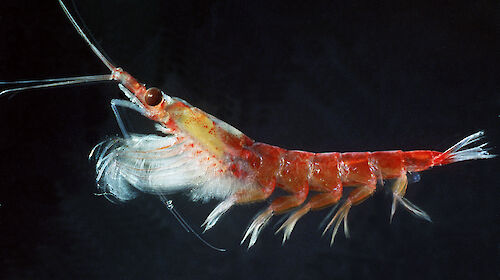This is because a reduction in sea ice reduces the amount of sea ice algae available for krill to eat in the lead up to the reproductive season.
The timing of sea ice retreat also influences when krill are ready to breed.
Scientists at the Australian Antarctic Division are researching how recent changes in sea ice cover affect krill – a keystone species of the Antarctic marine ecosystem. They have developed a conceptual model, showing how the Antarctic seasons may be linked to the life history of krill.


